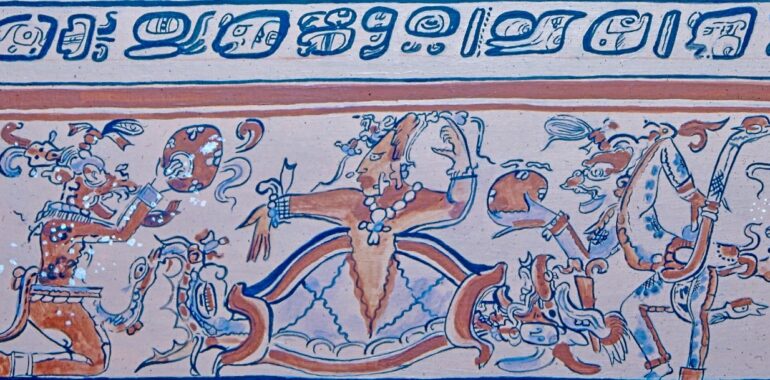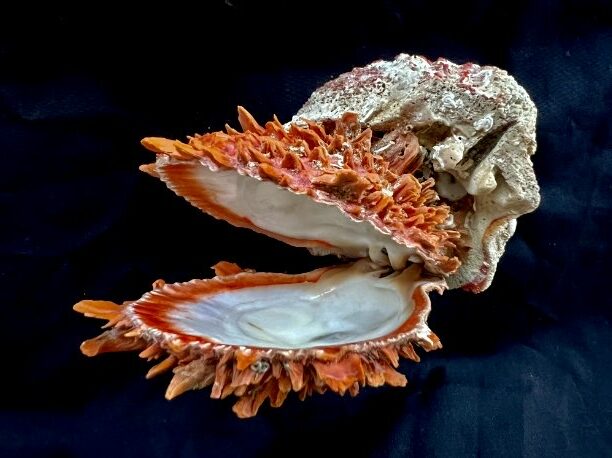
Spondylus spp. Property of Centro de Estudios del Mar y Acuicultura (CEMA), Universidad de San Carlos de Guatemala (USAC). Photo by Victor Mendoza, 2022.
Mayan art was developed in southeastern Mesoamerica during the Late Preclassic period and flourished in the Classic period. It includes architectural structures, stone sculptures, carved wooden pieces, murals, writing, books, ceramics, precious stones, and various other sculpture and body decoration materials. Dr. Nicholas Hellmuth has extensively studied the iconography of Mayan art. One of his theses was on sea creatures in classic Mayan art, and we have documented many of them during our expeditions. Join us to learn more about these species and their meaning to the ancient Mayans.
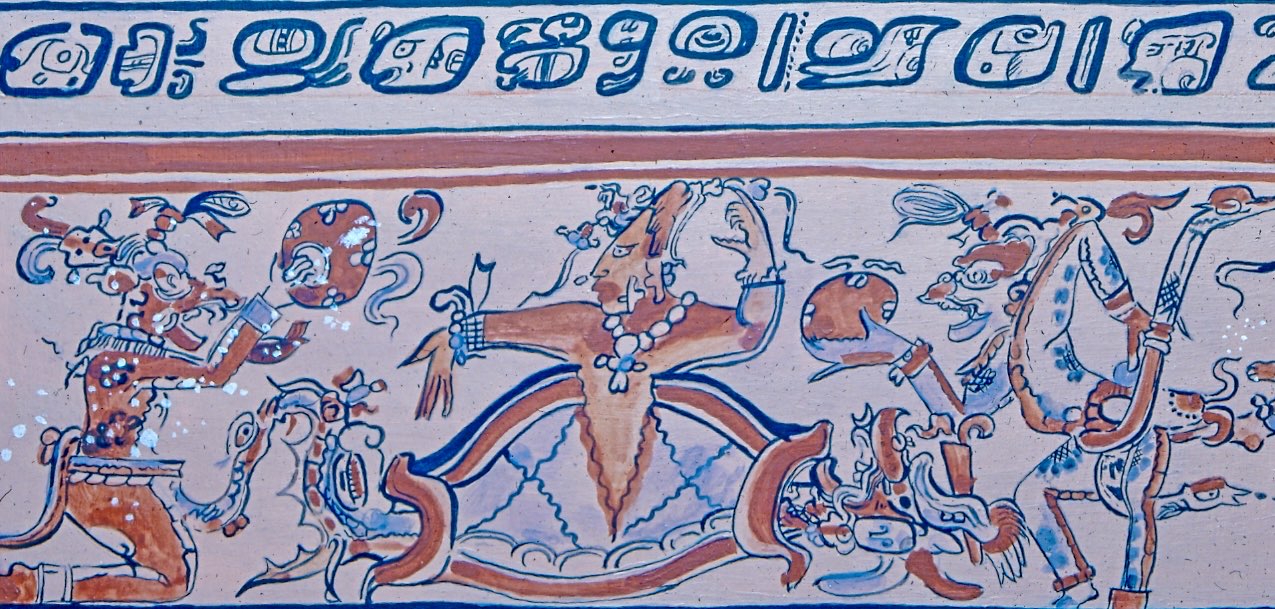
Rollout drawing Maize God split turtle.
Crabs
Crabs are depicted in various Mayan sculptures and artifacts. They are mentioned in records from Bilbao, Cotzumalhuapa, and the southern coast of Guatemala. Archaeologists believe that crabs were part of the diet of Mayan priests and rulers, as remains have been found in different archaeological sites. The crabs were consumed in sacred ceremonies that the elite participated in. The Mayans considered crabs important because their pincers were seen as a symbol of regeneration, as the animals had the ability to replace them. As a result, the Mayans included crabs in their inauguration offerings.
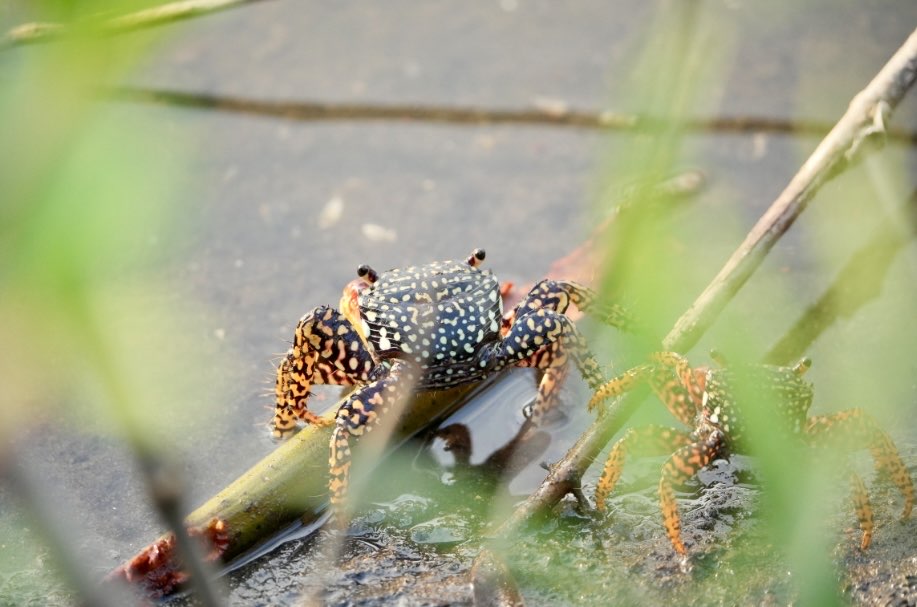
Crab, Crustacean. Sipacate, Escuintla. Photo by Edwin Solares, 2024.
Sea Turtles
The ancient Mayans also portrayed sea turtles in striking carved stelae discovered in the archaeological ruins of Quiriguá and the Governor’s Palace of Uxmal. For the Mayans, sea turtles symbolized water, land, and thunder. One of the Mayan deities is frequently depicted wearing a turtle shell on its head. Sea turtles were also considered symbols of longevity, fertility, and good luck, and as graceful swimmers, they embodied freedom.
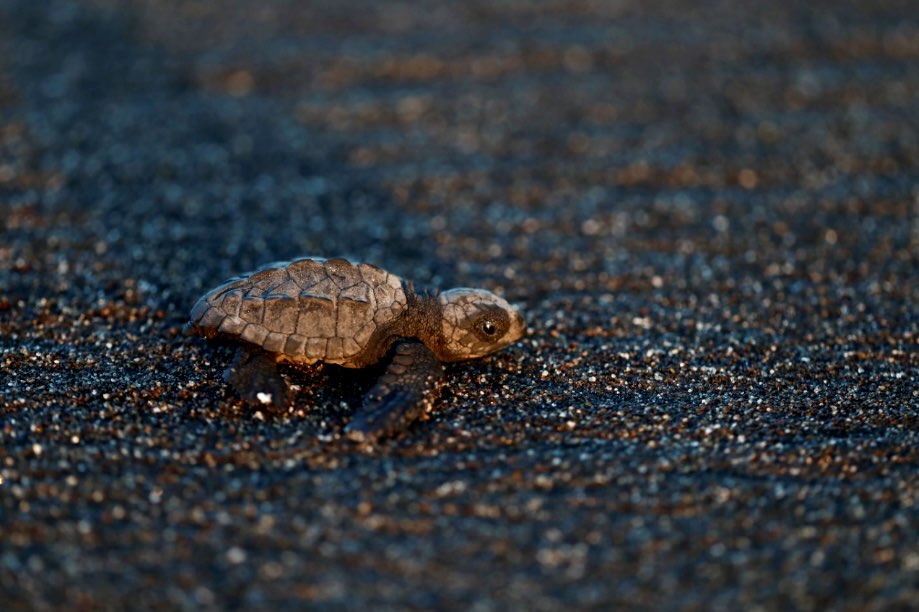
Lepidochelys olivacea. Sea turtle. Monterrico, Santa Rosa. Photo by Erick Flores, 2018.
Crocodile
The crocodile holds significant importance in Mesoamerican ideology. It is linked to fertility as timely rains were crucial for the fertility of the land. In certain Mayan groups, such as those following Itzam Na, a god of nobility, the crocodile is associated with the elite. While the crocodile hasn’t been extensively studied in Mayan iconography, it is believed that the Mayans perceived the world as resting on the thorax of a large caiman or lizard, which in turn floated over a vast lagoon. Crocodiles are tasked with seeking out water, which is essential for fertility on Earth. As terrestrial creatures, they find water in the same waters they inhabit.
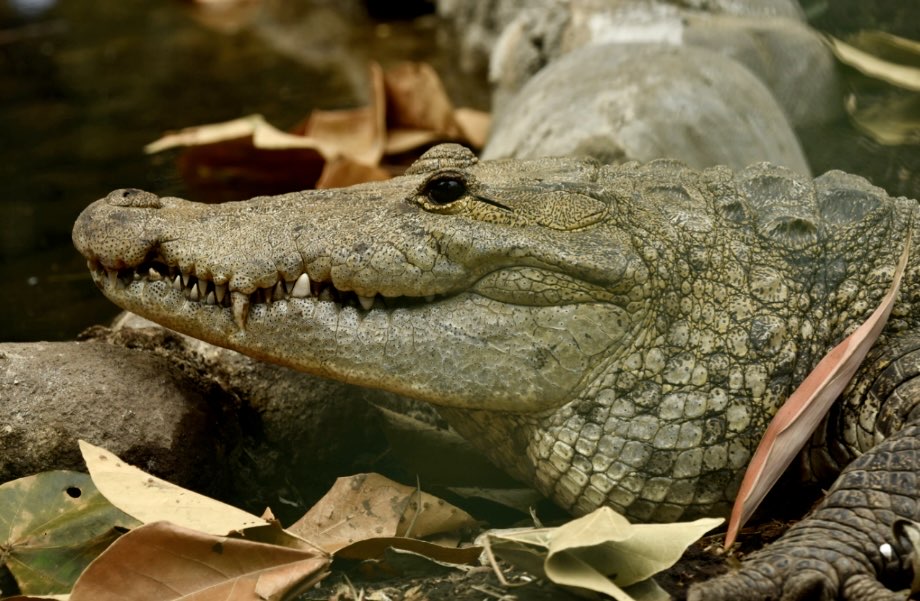
Crocodylus moreletii. Crocodile. Autosafari Chapin, Escuintla. Photo by Erick Flores, 2017.
Sharks
The shark held significant importance in Mayan culture. Depictions of sharks can be found across the entire Mayan region, spanning from Mexico to Guatemala and Belize. The Mayans even had a specific glyph for the shark (zook), which appeared in their hieroglyphs and other inscriptions. Shark teeth were used in the adornment of the corn god. Additionally, ceramic pieces personifying the shark have been found in areas where the inhabitants had no direct contact with the animal.
Bivalve Shells
Shells are commonly depicted in Mayan art and were highly valued by the nobility as precious jewels. They were used as ornaments on clothing and carried significant symbolic meaning in Mayan culture. Most of the shells belonged to the Spondylus genus and were used to make necklaces, bracelets, belts, headdresses, and as decorations on clothing. Shells were also used in puberty rites and were associated with labor and birth, symbolizing the lunar goddess Ixchel, who represented procreation, marriage, medicine, earth, and water. The shells were also linked to sacrificial rituals performed by the gods.
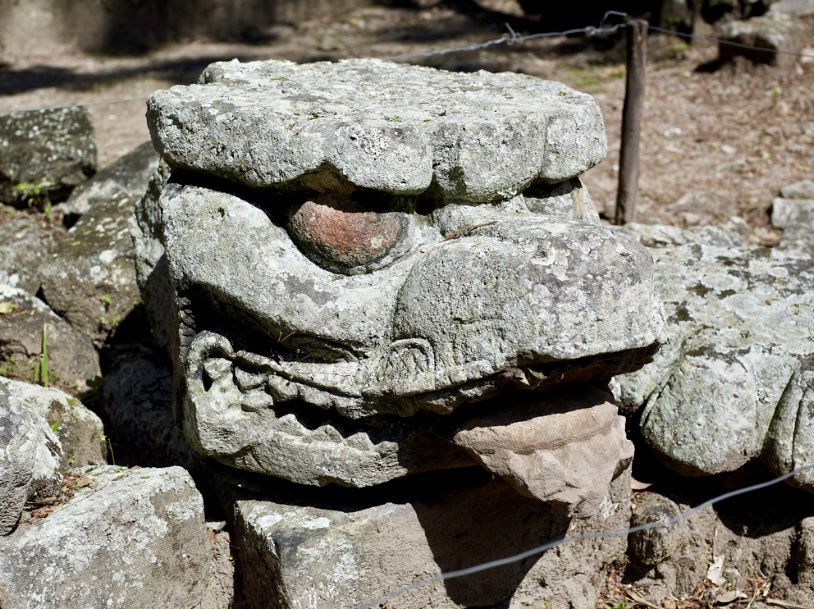
Spondylus spp. Property of Centro de Estudios del Mar y Acuicultura (CEMA), Universidad de San Carlos de Guatemala (USAC). Photo by Victor Mendoza, 2022.
Conch
Conch shells held great significance in Mayan and Mesoamerican iconography, often being depicted multiple times. Apart from their association with water, the conch was used as a trumpet and musical instrument. It played a role in various ceremonies and was often used during nighttime rituals. Additionally, it served as an important signal in combat, used to convey commands to the army. Conch shells were not only depicted in paintings and sculptures but they were also discovered as part of ceremonial offerings. They were frequently linked to the deity God N, who was consistently portrayed alongside shells and conch shells, as he was a deity associated with the earth and the four cardinal points.
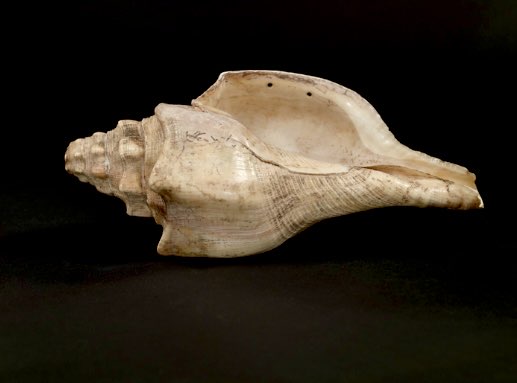
Conch. Plate, God N. VIGUA.
References
- 2004
- El cocodrilo en la cosmovisión Maya: Un proceso de larga duración. Tesis de Licenciatura, Área de Etnohistoria, Escuela Nacional de Antropología e Historia, Instituto Nacional de Antropología e Historia, Secretaría de Educación Pública.
- 1987
- a. The Surface of the Underwaterworld: Iconography of the Gods of Early Classic Maya Art in Peten, Guatemala. 2 Vols. Foundation for Latin American Anthropological Research, Culver City, CA.b.Monster und Menschen in der Maya-Kunst: Eine Ikonographie der alten Religionen Mexikos und Guatemala. Academische Druk-u. Verlagsanstalt, Graz.
- 2008
- Animal use at the Postclassic Maya center of Mayapán. Quaternary International, Vol. 191, No. 1, Pages 170 – 183.
- 2012
- Shells and other Marine Material from Tikal. Estudios de Cultura Maya, Vol. 3.

